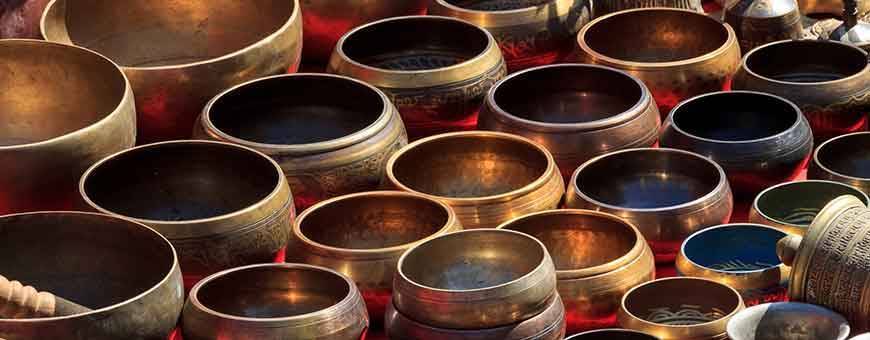Sorry for the inconvenience.
Search again what you are looking for
Leave your message
| Charity | Donated Amount |
|---|---|
| ROKPA ITALY (onlus) | $1,854.54 |
| CENTRE CULTUREL TIBETAIN (asbl) | $3,453.60 |
| KAGYU SAMYE DZONG NIDRUM (asbl) | $796.31 |
| AMITABHA FRANCE (assoc) | $2,842.11 |
| LES JARDINS DE MEDITATION (asbl) | $2,214.73 |
| PALYUL JAMYANG SHERIG PHUNTSOK NORLING Buddhist Center (asbl) | $568.23 |
| LES AMIS DE PADMA (Assoc) | $514.64 |
I want to help a Dharma/Charity organisation via a donation of:
My Dharma/Charity organisation is not on the list? Click here.
Customers reviews

The tradition of singing bowls can be found throughout Asia. Whether they are of shamanic origin or not, singing bowls, like other metal instruments (gongs, cymbals...), have always been used in religious and secular music.
The arrival of Tibetan singing bowls in the West dates back to the 1960s thanks to the popularisation of Tibetan Buddhism and the development of so-called vibratory therapies.
Tibetan bowls, or Tibetan singing bowls, are made of an alloy of seven metals. The number seven and the metals of which they are composed are directly linked to the seven chakras, those energy points which, according to Asian tradition, are located on a central energy axis running through our body.
In each singing bowl created according to tradition, the following metals are found: silver, iron, mercury, tin, copper, lead and gold. Each metal emits a specific sound, a specific vibration and it is from the harmony of these vibrations that the power of the singing bowls derives.
The practice of Tibetan singing bowls is based on the use of vibrations applied according to a series of techniques that harmonise the energies accumulated in our bodies.
It is very important to set yourself certain criteria in order to choose the Tibetan singing bowl that best suits you. These criteria can be as follows:
Depending on your goals, you may need one or more singing bowls with different characteristics (note, size, weight, budget, etc.).
If you are a beginner, it is advisable to take a Tibetan singing bowl with a rather low tone.
Close your eyes and let yourself be overwhelmed by the sound of the singing bowl. Your positive feelings are the first judge in the choice of your singing bowl.
The resonance of a Tibetan singing bowl corresponds to the length of time the sound is audible. As a general rule, the greater the resonance, the more the bowl's vibratory effect penetrates the body and develops its vibratory benefits.
This is also a practical matter.
The larger and heavier the Tibetan singing bowl is, the less easy it will be to handle although the sound probably produced is more suitable for therapeutic practice.
Medium-sized singing bowls (between 12 and 20 cm) are a good choice for beginners.
The real Tibetan singing bowl is made of an alloy of 7 metals (iron, tin, gold, silver, copper, mercury, lead).
Search again what you are looking for
